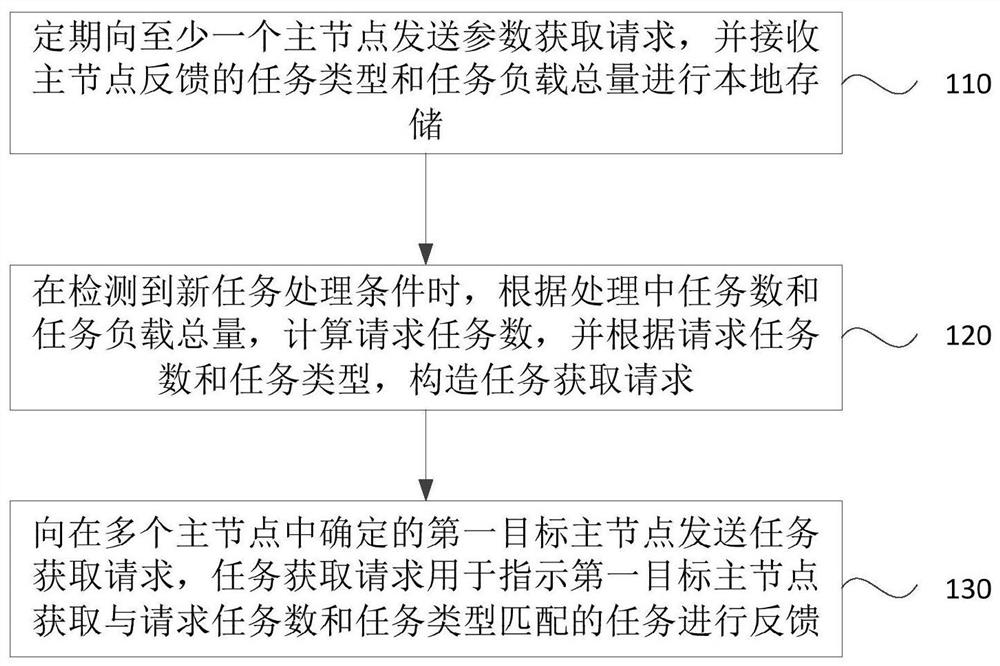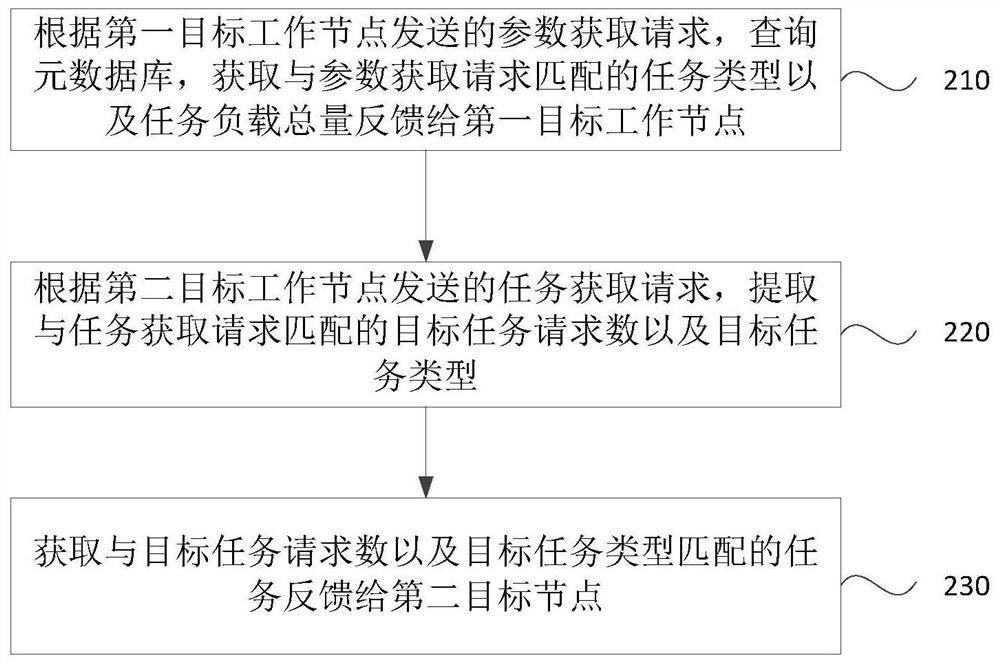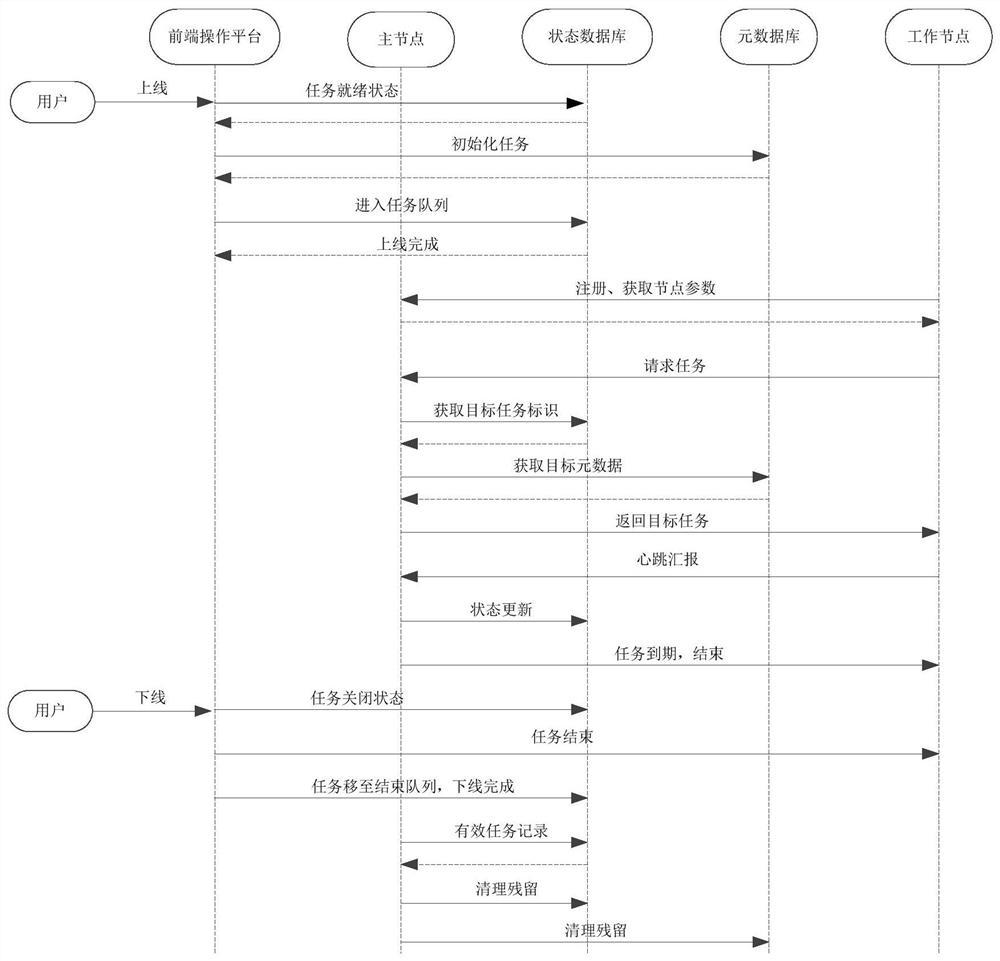Distributed task scheduling method and system
A distributed task and scheduling system technology, applied in the field of distributed task scheduling methods and systems, can solve the problems of Yarn's difficulty, poor development skills, and low development efficiency.
- Summary
- Abstract
- Description
- Claims
- Application Information
AI Technical Summary
Problems solved by technology
Method used
Image
Examples
Embodiment 1
[0056] figure 1 It is a flow chart of a distributed task scheduling method in Embodiment 1 of the present invention. This embodiment is applicable to the situation where the worker node actively requests tasks from the master node to achieve high concurrent scheduling of tasks. This method can be implemented by distributed task Scheduling means, which can be implemented by software and / or hardware, and generally can be integrated into the work nodes included in the distributed scheduling system. Such as figure 1 As shown, the method is executed by the working nodes included in the distributed scheduling system, and the distributed scheduling system includes multiple master nodes, and the method includes:
[0057] Step 110, periodically send a parameter acquisition request to at least one master node, and receive the task type and the total amount of task load fed back by the master node for local storage.
[0058] It should be noted that the master node and the working node ...
Embodiment 2
[0075] figure 2 It is a flowchart of a distributed task scheduling method in Embodiment 1 of the present invention. This embodiment is applicable to the situation where the master node performs task scheduling according to the task request of the working node to achieve high task concurrency scheduling. This method can be implemented by The distributed task scheduling device can be implemented, and the device can be implemented by software and / or hardware, and can generally be integrated into the master node included in the distributed scheduling system. Such as figure 2 As shown, the method is executed by a master node included in a distributed scheduling system, and a plurality of master nodes are included in the distributed scheduling system, and the method includes:
[0076] Step 210: According to the parameter acquisition request sent by the first target working node, query the metadata database, obtain the task type and the total task load matching the parameter acqui...
Embodiment 3
[0093] image 3 It is a sequence diagram of a distributed task scheduling method in Embodiment 3 of the present invention, and this embodiment can be combined with various optional solutions in the foregoing embodiments. Specifically, refer to image 3 , the method may include the following steps:
[0094] First, the user configures the initialization task parameters for the specified task on the visual task operation interface provided by the front-end operation platform, such as the working node that processes the task, the task type that the working node can handle, and the task load.
[0095] Then, the front-end operating platform sets the task as a ready state, and stores the task identification and the corresponding task state in the state database. After receiving the confirmation response returned by the state database, according to the initialization task parameters configured by the user for the task, such as the task acquisition address, task type, etc., the corre...
PUM
 Login to View More
Login to View More Abstract
Description
Claims
Application Information
 Login to View More
Login to View More - R&D
- Intellectual Property
- Life Sciences
- Materials
- Tech Scout
- Unparalleled Data Quality
- Higher Quality Content
- 60% Fewer Hallucinations
Browse by: Latest US Patents, China's latest patents, Technical Efficacy Thesaurus, Application Domain, Technology Topic, Popular Technical Reports.
© 2025 PatSnap. All rights reserved.Legal|Privacy policy|Modern Slavery Act Transparency Statement|Sitemap|About US| Contact US: help@patsnap.com



